42 km’s walking in 2 days added up to some very tired legs. But I realised my ambition to see some of the best sights of London.
Westminster Cathedral
The train from Gatwick took me to Victoria Station. From here it was a stroll to Westminster Cathedral. Built in the Byzantine style by John Francis Bentley in the late 19th century, it is certainly unique among London churches and worth a visit. The cathedral is free to visit (donations welcome) and has a gift shop. The stations of the cross are by Eric Gill and are the cathedrals main draw besides the fine architecture.

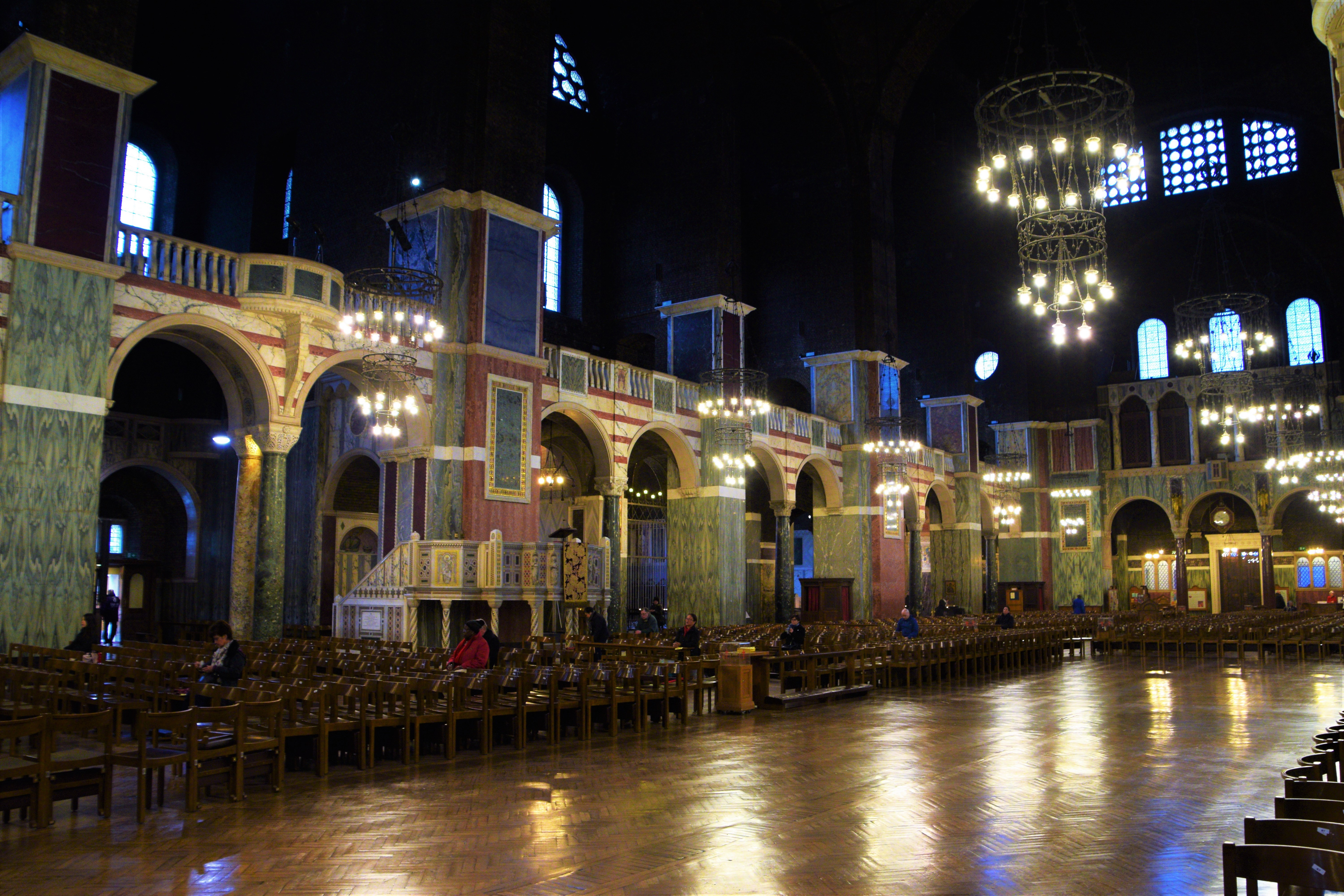
A £6 fare will give you access to the tower, the top which is reached by lift, with commanding views over the local area. Is it worth it… it’s questionable. It was a dull morning and the views from other London landmarks is better. But I’m a sucker for a tower.

Buckingham Palace was my next port of call. The palace itself only opens to the public during the summer months but the highlight here is the ceremonial changing of the guard. I advise to do what I didn’t, arrive early and get a good spot. My suggestion is on the steps of the Victoria Monument, get there at 10:15 for the 11 am ceremony. This elevated position will give you a good view of the processions approaching from Spur Road as well as the grounds of the Palace. Failing that a selfie stick (I hate myself to mention this) will get you some good shots from the footpath outside the Palace.

Westminster Abbey
I wrestled with the idea of visiting the Queens Gallery and the Royal Mews, but conscious of time, I marched to Westminster Abbey. The wealth of history that is associated with this building ensure that anyone even with a passing interest in the British Empire will not be disappointed. 1000 years of history are well represented.


I cannot recommend highly enough a visit. Only twice have I felt this level of awe in a place of worship, at the Notre Dame and the Sagrada Familia. Admission was £20 if bought online, which includes a free audio guide. Guided tours are available too, but if you are struggling for time, the audio guide allows you to pick and choose what is of interest. Sadly photography isn’t allowed within the Abbey.
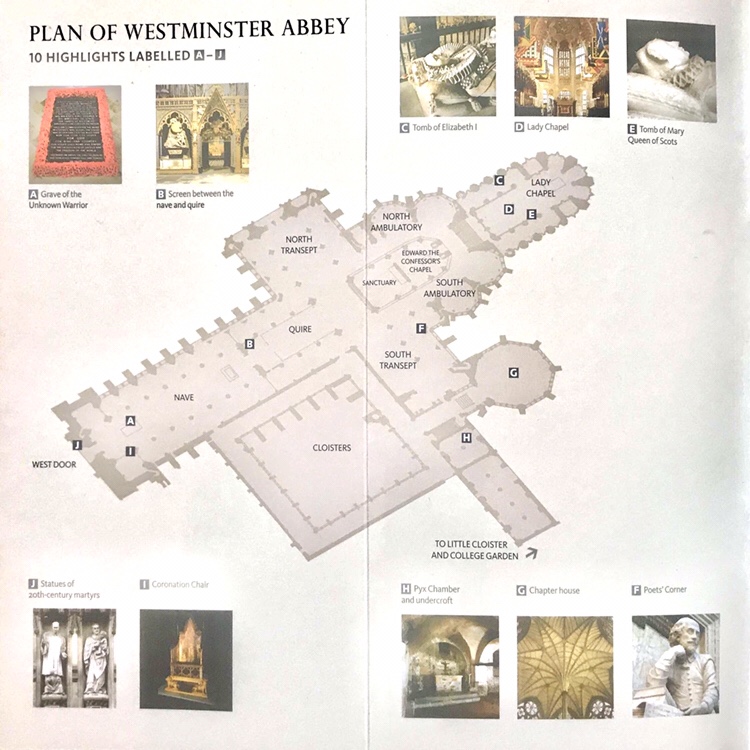
One can amble through at your own pace. The floors and walls are crammed full of commemorations to people who have served the British empire. From scientists, explorers to poets and playwrights, those who shone in life are respected here in death. For me the highlights are the architecture of the nave, the fantastic screen that takes one through to the beautiful quire, the altar with its Cosmati Pavement, and the succession of monuments in the North and South Ambulatory. My personal favourite was the Death from the Nightingale Monument, which was chilling in its depiction.
The Lady Chapel, a church within the church, is perhaps the jewel in the crown. Featuring the tombs of Elizabeth 1 and Mary Queen of Scots, it is the church of the order of the Bath. The banners of Knights hang from above the stalls at the side of the nave. Attention is rightly drawn to the ceiling, where wonderful craft has produced the most elaborate fan vaulting. It is amazing in its complexity and beauty.
The last stages of the tour take one through the cloisters, the chapter house and the very early Pyx chamber. These were an integral part of everyday monastic life. Returning from the cloisters the coronation chair is on view behind a glass partition. Perhaps I expected the Iron Throne, but this was a few swords short of it. It’s a little underwhelming considering the weight of history carried on it. For more info check out Westminster Abbey.
Next door to the Abbey is Dean’s Yard another sight worth a few shots.

With the Houses of Parliament on my right, and a heavily scaffolded Big Ben, I made my way north, zigzagging through streets, passing Churchill’s War Rooms, the now heavily guarded and inaccessible Downing Street, the Household Cavalry Museum (a good place to catch a minor changing of the guards in the morning) where fine horses stand to attention street side, Admarality Arch and onwards to Trafalgar Square.


After a quick refuelling stop in Pret A Manger, consisting of some super fruit, a sandwich and a coffee, I traversed London’s Chinatown to Piccadilly Square and Soho. I absorbed the colours of the West End before satisfying my curiosity to seek out the Liberty Store on Marlborough Street.



No I hadn’t come to shop, it is a Tudor revival building, the frontage of which was built from the wood of 2 ships. It’s a grade II listed building. Check out the clock with its mechanical workings as it strikes the hour. The building received some criticism at the time of construction, but I’m entranced by all things Tudor in style.


British Museum
My last stop of the day (or so I thought) was the British Museum. A vast collection of artefacts await, sourced from all corners of the planet, and organised according to the great civilisations that ruled them. Several hours are needed to view it, and luckily being a Friday it was open till 8, so I was afforded it. The building itself with its magnificent central plaza is a treasure. A string of cafes and shops circumference the central plaza. Admission is free, donations suggested, but at least shell out for a colour map. The whole museum warrants exploring. I found of particular interest the Friezes from the Acropolis in Athens, the Egyptian Rooms, centred on the Rosetta Stone and the mysterious mummies. The stone carvings from Amarvita were a highlight as was the exquisite collection from the Sutton Hoo ship burial. The whole collection is as marvellous as any in the world, and at this price unmissable.



Jaded I made my way back to my hotel using a combo of the underground and my poor tired legs. As a solo traveller, the Holiday Inn Express satisfied my needs, reasonably priced, decent breakfast, excellent central location and a clean spacious room for 1. After a soaking shower, where I debated whether I would be able to walk the next day, I made the short walk to the Tate Modern, to find some dinner. There is a bar and a restaurant on site, one too simple and one too refined for what I had in mind. I settled for a burrito after I left. I’m not one for modern art, but entry is free, and the museum makes excellent use of what was previously a power station. The roof gives one access to excellent views of the area. My final act for the day, I went to earn some well earned shut eye.




Day 2 of my walking adventure through London began, with me attempting to burn through as many attractions as I possibly could. My flight home was at 7:50pm so no time to lose.
Shakespeare’s Globe Theatre
I woke and had a hearty breakfast in the Premier Inn, decent for a relatively budget hotel. Checking out promptly, I hastened to the Shakespeare’s Globe Theatre. The Theatre is in fact of replica of one that existed near the current site, in the days of the bard. It is quite interesting for a number of reasons. Theatres at the time weren’t allowed within the city walls, and hence were built on this side of the Thames. They were open aired buildings. Theatres were then associated with free speech, drinking and debauchery, not ideal for the ruling classes, and so kept outside the walls. The rebuilt Theatre is the only building within London to be allowed to have a thatch roof, since the great fire of London decimated the city.

Guided tours leave every 30 minutes, and concessions are available online, entry is £10 during the winter months. The tour guide (cannot recall her name) was excellent. Very knowledgeable and good-humoured. The tour really helps you encapsulate how it was for all classes of society to view shows back then, and the sights, sounds and smells that came with the territory. The Theatre is a beautiful building, both in and out. Plays are only staged in the theatre during the summer months, but for those wishing to see a show, the adjoining Sam Wanamaker Playhouse will cater for their needs. Named after the American whose passion and vision saw the Globe Theatre being rebuilt after several centuries. More info at Globe Theatre .



St Paul’s Cathedral
Millennium Bridge brought me directly to the shadow of St Paul’s Cathedral, Christopher Wrens masterpiece within the City of London. Construction was between 1675 and 1711, after an earlier cathedral was destroyed in the Great Fire of London in 1666. The dome is the second largest in the world behind St Peters Basilica in Rome, at 366 feet high.


Entry is £18 with an audio tour included. Website £16 here. Photography isn’t allowed but I sneaked a few shots. The nave is flanked by 2 unusual looking crucifix’s and an enormous monument to Admiral Nelson. The North Transept contains The Light of the World by Hunt. When one enters the Apse, eyes are drawn to the huge dome above. It is breathtaking. The murals adorning the dome and under the dome are spectacular. It’s wise to do as the audio guide suggests, take a seat and reflect. It’s neck ache inducing. The altar was re-constructed after World War 2, the victim of a German bomb. Take the North Quire Aisle to see Henry Moore’s Mother and Child, and on into the quire. Marvel again, at the beauty of the high altar and the solemnity of the quire.


Take the stairs off either Transept to visit the crypt. Of note here are the tombs of the Duke of Wellington and Nelson, both given pride of place. Florence Nightingale, Christopher Wren, and Churchill are honoured too. A cafe serving standard fare is located in the basement. You need to hold on to your ticket to go to the cafe. Back on the cathedral floor, the south aisle contains the stairs heading up to the galleries. Bear in mind there are steps. Lots of steps. My legs weren’t happy after. But they always lose out to my brain.
The first flight, 257 steps gets you to the Whispering Gallery. So called cause if somebody stands on one side and whispers it can be heard on the other side. I was alone so I decided would be best not to try it. For my sanity. The up-close view of the murals shows just how awesome they are. For those without an aversion to more steps, a further flight of 119 spiral steps takes you to the Stone Gallery. This is ideal for panoramic views of London, with its walkway around the side of the dome. The last flight, up 152 more steps leads to the Golden Gallery. Here the view is bettered by a 22 metre increase in height. 85 meters in total above the cathedral floor, the views are glorious.






Back on level ground I decided to tour some of the most impressive buildings that the financial core had to offer.


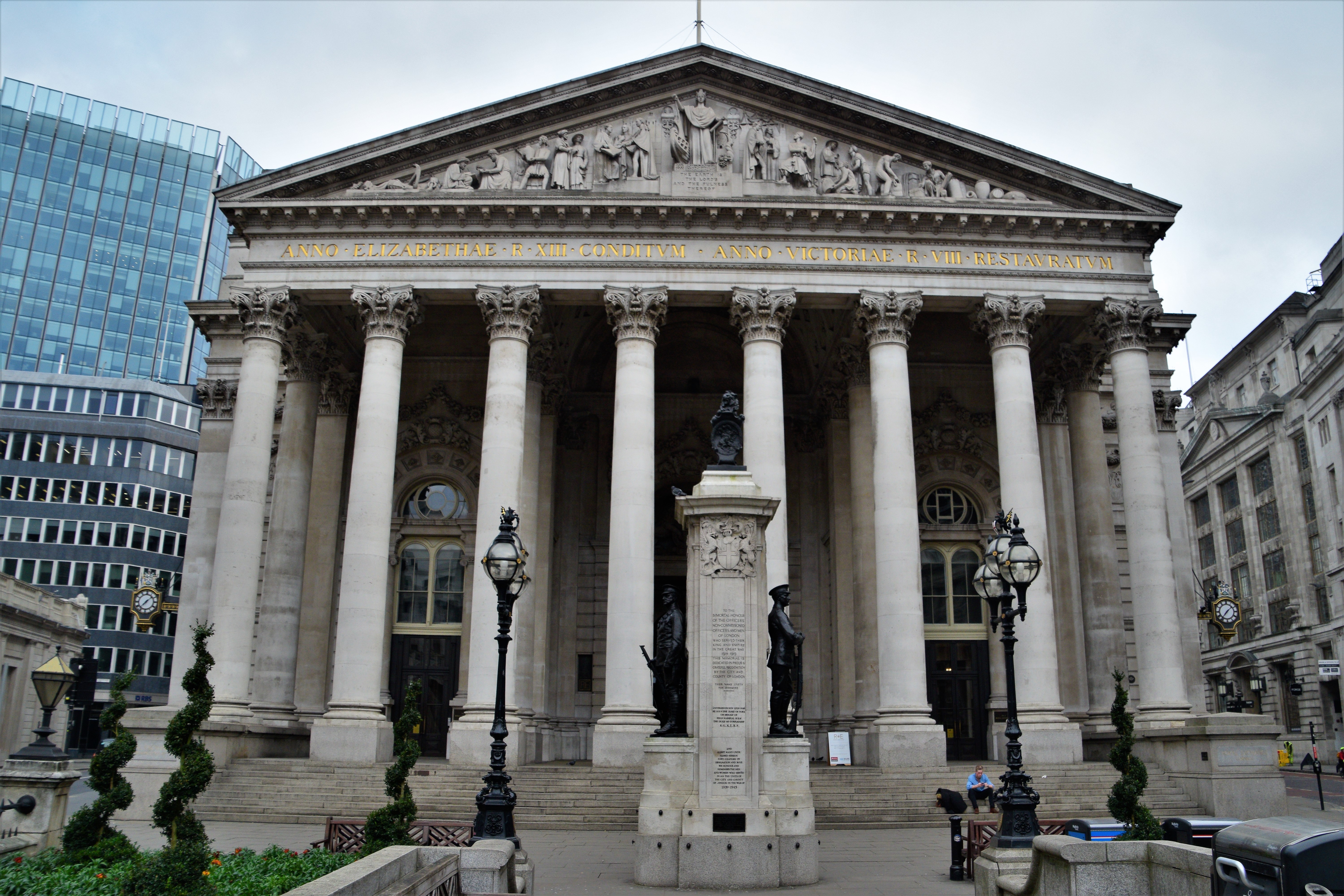
Tower of London


Taking the circle line to Tower Hill set me up for a couple of stops. First up the Tower of London. If a city has a castle, a citadel or a fortress, it’s the first thing on my list of what to visit. The Tower of London is more than that it’s an experience. From the 35 Yeoman Warders, who guard, give tours and live within the Tower, the Crown Jewels on display, its famous residents (mostly the involuntary ones), to the Ravens. Myth has it that if the ravens fly from the Tower, the British Empire will fall. One wing of the ravens is clipped to ensure they cannot leave the bastion. The huge ravens survive on a diet of 170 grams of raw meat and biscuits soaked in blood. They are to be honest, a bit scary.


The White Tower, the most recognisable building within, was built in 1097, and was the tallest building in London at the time. It is 30 metres tall and the walls are 5 metres thick. There is a Norman chapel within the Tower, the chapel of St John, and a fine collection of armour and weapons from several centuries.

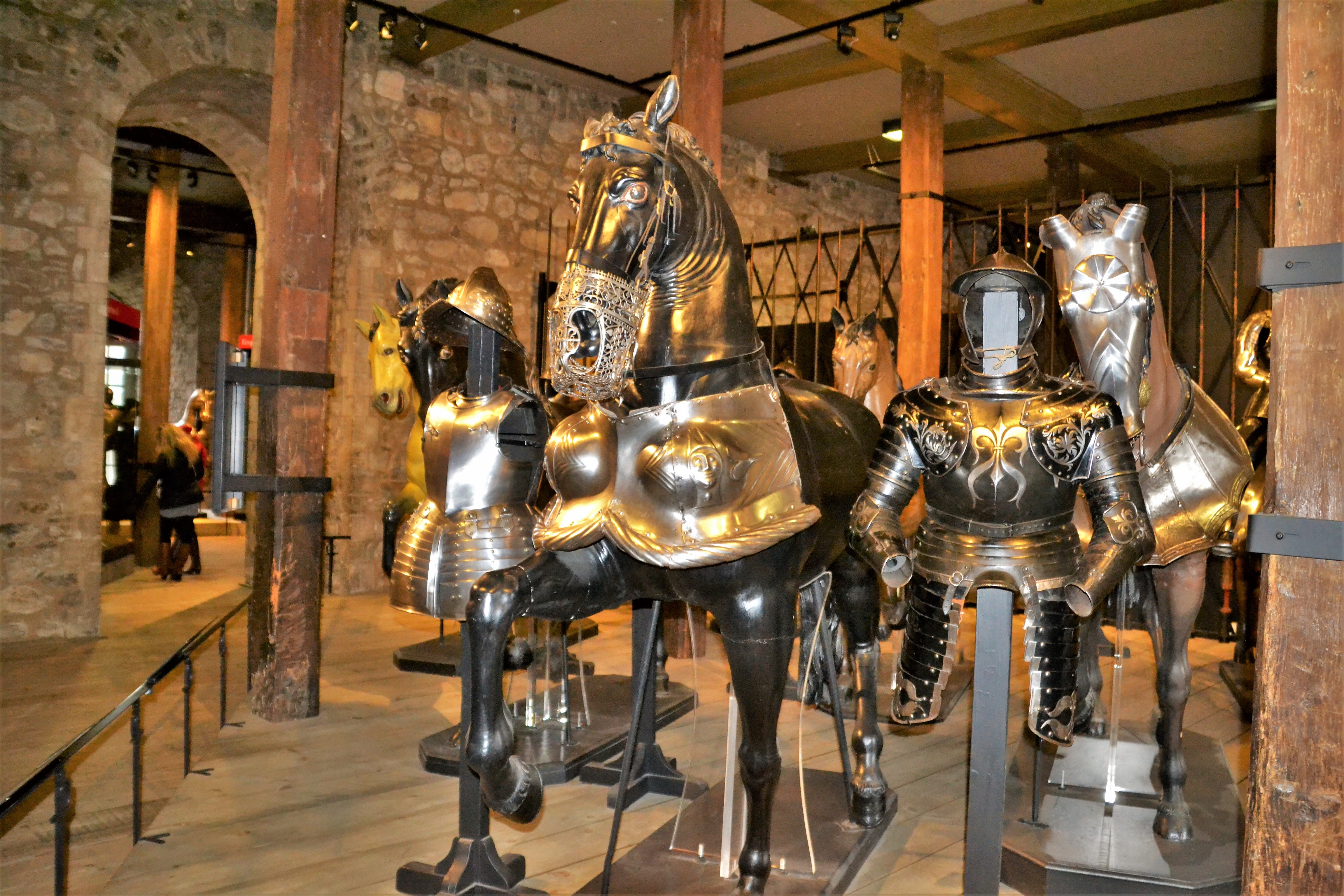

The Jewel Tower does exactly what it says. Containing the Crown Jewels which are used for coronations and other state occasions, it is a priceless collection. The jewels on show date from 1661 onwards, the previous ones were mostly destroyed under Oliver Cromwell. Featuring 10 gem studded crowns as well as sceptres, orbs and swords it is not to be missed. The Imperial State Crown alone holds 2800 diamonds.


A tour around the rest of the tower, will bring you to the Beauchamp Tower, where many of the more important prisoners were kept, often under very good conditions. The Tower Green was the site of many executions, including a couple of Henry VIII’s wives. The most harrowing story to be found is within the Bloody Tower, which tells the story of the little princes and their murder at the hands of their uncle Richard. What was presumably their bodies were discovered 200 years later. Their bones were laid to rest in Westminster Abbey. Bringing my trip full circle after my visit the day before. Admission to the tower is £21.50, and more info available here.
Tower Bridge
Climbing up on to Tower Bridge ensure you are on the right side walking south as the bridge can’t be crossed (I made this mistake). Entry to the bridge is £9.80. Concessions online. The tour begins with a guide and video recounting the history of the bridge and it’s constructors. I have to be honest I found the whole tour drab and boring. The staff were robotic and unable to give the place the personality it needed. The one redeeming feature of the whole tour was the glass floor on the upper walkway. The option to walk on by is given to those with vertigo. I was so disheartened I gave the engine room a miss. The bridge is majestic to look at, from afar and close up. It deserves its status as London’s most recognisable landmark. But it is best viewed from without.


Imperial War Museum
I put my London Underground map to the test, and after a few changes arrived at Lambeth North confidently. The Imperial War Museum loomed as I turned on to Lambeth Road. It’s dual naval guns are a formidable sights. Upon entry to this free museum, the 3 story atrium is dominated by the military aircraft hanging from the ceiling. A Spitfire takes pride of place. Surely a harrowing sights to see them bear down on you in battle. It is joined by a modern harrier jet and an enormous V-2 rocket. I grabbed a late lunch in the cafe there, a tasty sandwich and a coffee.








The museum is divided by floor, the ground floor dedicated to World War I. Throughout all the floors the machines of war are displayed, their ability to devastate for all to see. The human aspect is also well portrayed, through photos, journals and newspapers clippings. You could spend hours reading the first hand experiences of soldiers, journalists and those who were lost during the great wars. I was running low on time so couldn’t afford too long on each exhibit. The trench warfare experience conveys a sense of how it was for the soldiers. Walk the trench as a Sopwith Camel Plane and German tank lurk above.
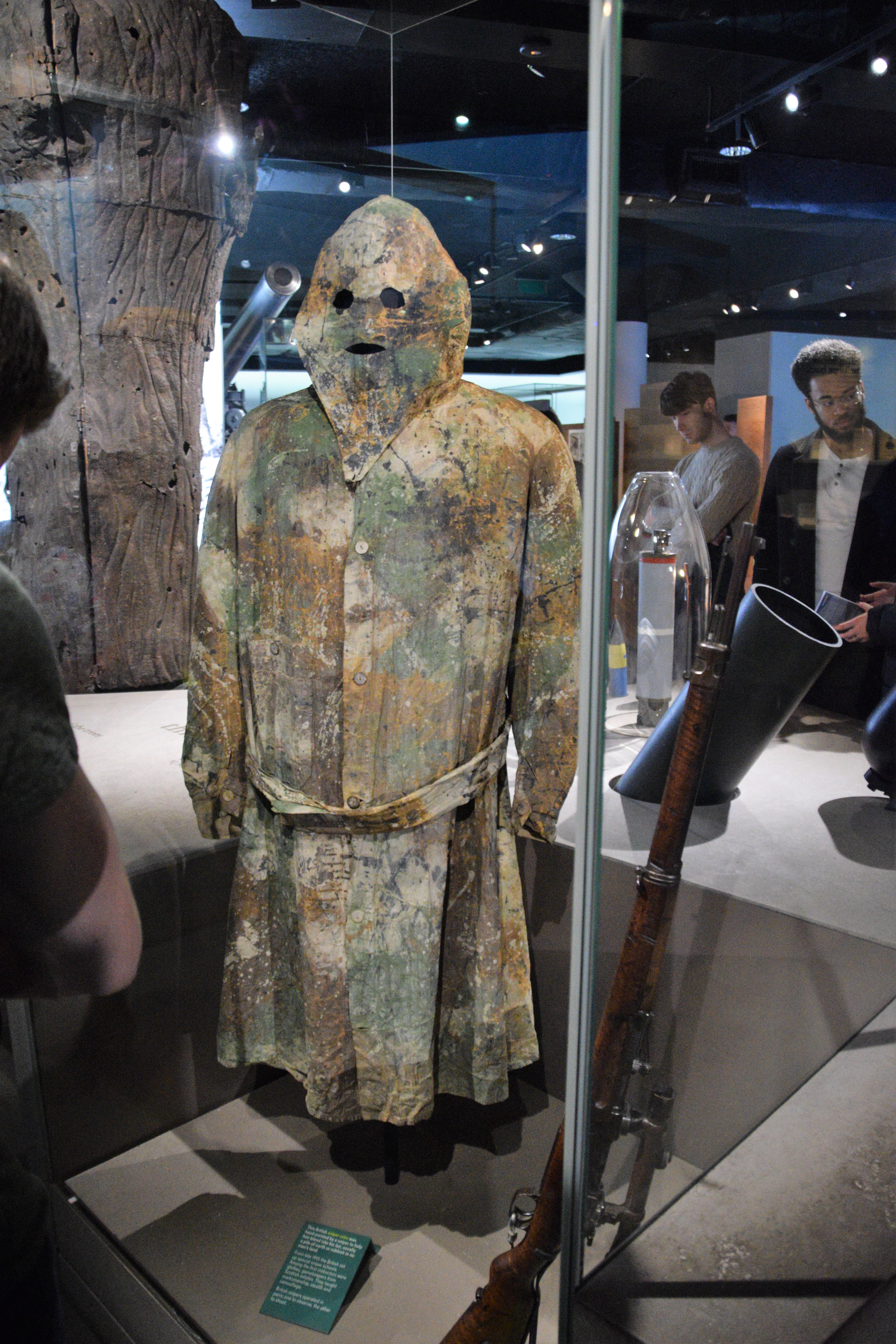




The second floor traces World War II from the earliest moves by the nazis in the 1930’s through the war. Again the machines of war take centre stage. The plight of the average citizen as they struggled to face the Blitz is a strong focus here.



The third floor is a departure from other floors, examining the Cold War and modern wars. The destruction and threat of nuclear warfare is examined. The Beach Girl sculpture is a brash statement about the horrors. Curiosities of modern-day battles can be found on this floor.


The most harrowing floor is that dedicated to the holocaust. An air of solemnity exists amongst the public here, as they read the stories of the survivors and victims of the nazi final solution. Take time to read the stories of the individuals who were at the heart of the terror. It is charted from the initial movements where Jews had to register, to their confinement to ghettos and on to the concentration camps. The glass display of shoes evokes memories of the huge rooms I’ve seen in concentration camps in Poland. The giant scale model of Auschwitz camp gives you a very visual display of how, on the orders of the high command, the nazis started systematically eliminating its prisoners in Hungary and Central Europe. The diagram is narrated by posters on the side, with first hand accounts and descriptions of how the atrocities occurred. It is very moving and not recommended for those under 14. Out of respect no photos are allowed here.
I left the museum melancholic after the holocaust floor. Alas my trip was nearing an end. I trudged to my hotel to collect my suitcase, and from there on to Blackfriars Station to catch my train to Gatwick. My legs by this stage had resumed their lament. But my mind was now satiated. I was impressed by my 2 day endeavour. London suddenly felt a little smaller and less daunting than it sometimes had.




4 responses
Great post. Agree that London has a lot to see and do. Walking is often the best way to get about as so many neat vignettes pop up as you walk between the big sites. It is amazing at the end of a day, how far we can walk if we are entertained by our surroundings. Allan
It’s an amazing city. I’ll be honest though my legs really suffered after those days. I was alone so no one was there to pull me back or slow me down. Not always a good thing. But I really got to do so much